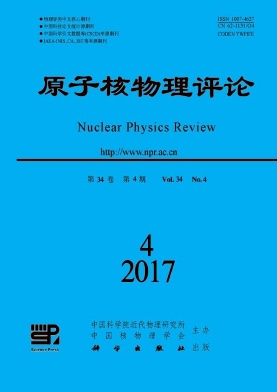|
[1]
|
HEWISH A, BELL S J, PILKINGTON J D, et al. Nature, 1968, 217(5130):709. |
|
[2]
|
MANCHESTER R N. Astronomical Journal, 2005, 129:1993. http://www.atnf.csiro.au/people/pulsar/psrcat/. |
|
[3]
|
YOUNG M D, MANCHESTER R N, JOHNSTON S. Nature, 1999, 400(6747):848. |
|
[4]
|
HESSELS J W T, RANSOM S M, STAIRS I H, et al. Science, 2006, 311:1901. |
|
[5]
|
LATTIMER J M, PRAKASH M. Physics Reports, 2007, 442(1-6):109. |
|
[6]
|
DEMOREST P, PENNUCCI T, RANSOM S, et al. Nature, 2010, 467(7319):1081. |
|
[7]
|
ANTONIADIS J, Science, 2013, 340(6131):1233232. |
|
[8]
|
LI Z S, QU Z J, CHEN L, et al. Astrophysical Journal, 2014, 786(2):86. |
|
[9]
|
http://www.jb.man.ac.uk/pulsar/Glitches/gTable.html. |
|
[10]
|
LYNE A G, SHEMAR S L, SMITH F G. Monthly Notices of the Royal Astronomical Society, 2000, 315(3):534. |
|
[11]
|
ESPINOZA C M, LYNE A G, STAPPERS B W, et al. Monthly Notices of the Royal Astronomical Society, 2011, 414(2):1679. |
|
[12]
|
YU M, MANCHESTER R N, HOBBS G, et al. Monthly Notices of the Royal Astronomical Society, 2013, 429(1):688. |
|
[13]
|
LATTIMER J M, PRAKASH M. Science, 2004, 304(5670):536. |
|
[14]
|
ITON N. Progress of Theoretical Physics, 1970, 44:291. |
|
[15]
|
BODMER A R. Phys Rev D, 1971, 4:1601. |
|
[16]
|
WITTEN E, ALCOCK C, FARHI E, et al. Phys Rev D, 1984, 30:272. |
|
[17]
|
ALCOCK C, FARHI E, OLINTO A. The Astrophysical Journal, 1986, 310:261. |
|
[18]
|
ALFORD M. Review of Modern Physics, 2008, 80:1455. |
|
[19]
|
FRAGA E S, PISARSKI R D. Phys Rev D, 2001, 63:121702. |
|
[20]
|
WEISSENBORN S, SAGERT I, PAGLIARA G, et al. Astrophysical Journal Letters, 2011, 740:L14. |
|
[21]
|
LAI X Y, XU R X. Astroparticle Phys, 2008, 31(2):128. |
|
[22]
|
LAI X Y, XU R X. Monthly Notices of the Royal Astronomical Society, 2009, 398(1):L31. |
|
[23]
|
LAI X Y, XU R X. Monthly Notices of the Royal Astronomical Society, 2013, 431(4):3282. |
|
[24]
|
XU R X, GUO Y J. arXiv:2016, 1601:05607. |
|
[25]
|
LAI X Y, XU R X. arXiv:2017, 1701:08463. |
|
[26]
|
ZHANG C M, ZHAO F Y. Chinese National Astronomy, 2010, 5:70. (in Chinese) (张承民, 赵复垣. 中国国家天文, 2010, 5:70.) |
|
[27]
|
RUDERMAN M A. Nature, 1969, 223(5206):597. |
|
[28]
|
BAYM G, PINES G. Annals of Physics, 1971, 66(2):816. |
|
[29]
|
LAI X Y, XU R X. Research in Astronomy and Astrophysics, 2011, 11(6):687. |
|
[30]
|
ZHOU A Z, XU R X. Astropart Physics, 2004, 22(1):73. |
|
[31]
|
XU R X, TAO D J, YANG Y, et al. Monthly Notices of the Royal Astronomical Society Letters, 2006, 373(1):L85. |
|
[32]
|
ZHOU E P, TONG H. Monthly Notices of the Royal Astronomical Society, 2014, 443(3):2705. |
|
[33]
|
PACZYNSKI B. Astrophysical Journal(USA), 1990, 365(1):L9. |
|
[34]
|
CHANDRASEKHAR S. Astrophysical Journal, 1970, 161:561. |
|
[35]
|
HELFAND D J, GOTTHELF E V, HALPERN J P, et al. Astrophysical Journal, 2001, 556(1):380. |






 甘公网安备 62010202000723号
甘公网安备 62010202000723号 DownLoad:
DownLoad: